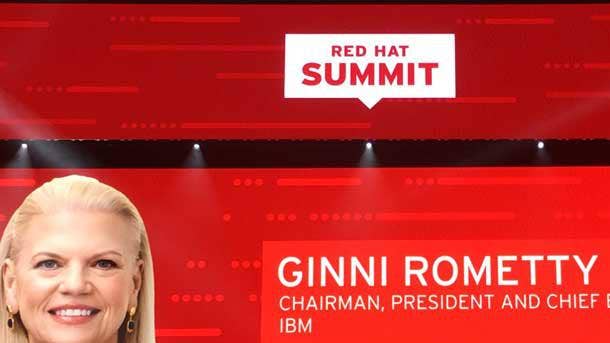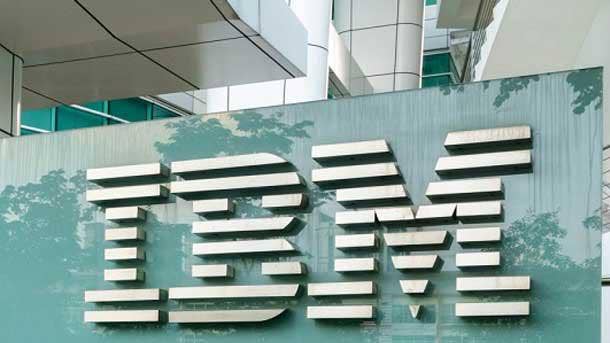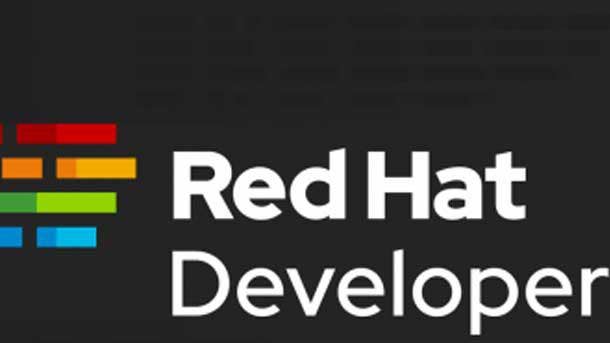Red Hat CEO Pledges To Keep Working ‘Really, Really Hard To Protect’ Channel Partners
‘We are spending a massive amount of time in the planning phase of this [IBM acquisition] being highly, highly sensitive to protecting our channel and our channel partners,’ Red Hat CEO Jim Whitehurst says.

The Next Stage For Red Hat
Channel partners will remain the key to accelerating Red Hat’s growth once IBM closes its $34 billion acquisition of the enterprise open-source software provider, Red Hat CEO Jim Whitehurst said Wednesday.
CRN sat down with Whitehurst at the Red Hat Summit in Boston to talk Red Hat’s commitment to its channel partner program under Big Blue, which is about two years into its own channel program overhaul.
IBM CEO Ginni Rometty, from the Red Hat Summit stage on Tuesday, said Red Hat would remain independent, with its culture preserved, once it becomes a part of IBM. But channel partners—which drive 80 percent of Red Hat’s revenue—were not mentioned.
While Whitehurst was cautious in his statements due to outstanding regulatory approvals of the IBM deal, he said Red Hat was being “highly, highly sensitive to protecting our channel and our channel partners.”
Here’s what Whitehurst had to say about Red Hat’s channel program and life under IBM.

Message To Channel Partners
CRN: Ginni Rometty last night reiterated that Red Hat would remain independent and she wanted to preserve its culture, but there was really no mention of the channel. What’s your message to Red Hat channel partners who fear the acquisition could derail Red Hat’s channel momentum?
Whitehurst: What I would say overall is we're in the planning phase, obviously, right now, so this isn't done. We are spending a massive amount of time in the planning phase of this being highly, highly sensitive to protecting our channel and our channel partners. IBM—because they've always had a Global Business Services business and a direct sales force and a channel—is really, really good at thinking about that and the second-order consequences. So we're working really, really hard to protect all of our channel partners.
And we are continuing to spend a ton of time on it. I think we're going to have great programs, processes, to make sure that all our channel partners ultimately benefit, because we believe this will accelerate our growth. We're being really sensitive to keep our channel partners completely separate, because it's going to be a separate entity. It's something we're spending a lot of time on. We recognize how important it is—80 percent of our revenue goes through our partners.
CRN: So there's no plans to water down Red Hat’s channel partner program?
Whitehurst: Not at all. Just verbally, in the conversations going back and forth, even before we got to the point around the acquisition, they've always been enamored with the fact—they call it our “long tail”—that we have thousands of customers, which is a real strength of us. And I know they see that as a real strength of ours. That's all because of our channel strategy. So that's something that they see is really, really important to us and the value that we bring with us to IBM.

Channel Partner Program Investments
CRN: What kind of investments are you making in your channel partner program this year?
Whitehurst: Here’s the issue when you get into the IBM stuff: Because we don't have regulatory approval, we can only plan. So specifics of what we will be doing as soon as we get this closed, we're not allowed to get to that level of detail. The specific things we're doing around partners, we aren't allowed to coordinate that. Generically, as Red Hat, we've continued to invest around our channel partners, we’ve continued to build out a whole set of capabilities around enablement and training around our channel partners. It's been a big, big, big push of ours. Broadly, the reason this is so important is when I first got to Red Hat, we were primarily direct, and so this has been a long-term, multi-year strategy. We sell infrastructure. Nobody buys infrastructure to buy infrastructure, they're buying it to do something with it. We’re open-source infrastructure people, so our partners are critical to building business functionality on our infrastructure. Our value proposition is our infrastructure is better and cheaper, so we should be a better partner in the solutions that they're delivering than anybody else. Our channel business, obviously, has grown as a share of our total business—and we've grown [overall revenue in the] high teens to low 20s [in the last decade]— so our channel partners have seen really significant growth in the business. That's been great for us, it's been great for them and I certainly see that continuing going forward. And our share of business that goes through our channel partners is growing.
CRN: Are there any plans to change the compensation model for channel partners?
Whitehurst: Definitely can't get into that. Ask me in July or August.

The Benefits Of IBM As A Corporate Parent
CRN: What are you most excited about as you look at IBM as your corporate parent?
Whitehurst: When our infrastructure was commoditizing things that were there, the value proposition was Linux is cheaper than Unix, or JBoss is cheaper than [IBM’s] WebSphere. And that model we were pretty good at, because we were technologists, and we need the feeds and speeds of those software versus ours.
As open source has become more about innovation—like OpenShift, it's all a platform to innovate on—we're not industry experts. To go to … an airline and say, ‘Hey, you can use OpenShift to fundamentally accelerate your baggage system and performance by doing X, Y, and Z on this platform,’ we have no ability to do that. We can bring the platform, but we can't have that next discussion. So we've ultimately relied on partners or often just customers—‘Here are the Lego bricks, you put them together how you want to.”
IBM can bring a top-down, ‘Hey, here's a set of solutions,’ and an ability to go talk in a more senior level to help us accelerate into industry verticals in a way that we just haven't been before. The other is just tens of thousands of salespeople who will now be motivated to sell Red Hat. They can really help us accelerate our business.
That's what’s also in it for our partners. We see this as certainly a way that we're going to accelerate our revenue growth, which should be good for all of our partners, because, again, there's no plans to change our mix or how we go to market. Assuming we can accelerate our revenue, that's accelerated revenue for all of our partners as well. We certainly want to learn from [IBM’s] expertise, but our go-to-market is totally independent of theirs and will be [going forward].

Sales Trends Among Channel Partners
CRN: Can you talk about some of the top trends you're seeing among channel partners selling Red Hat?
Whitehurst: The biggest thing we've seen is just this explosion around the container platform. [For] OpenShift, we're over 1,000 enterprise customers. Most of those are being fulfilled by and driven by our channel partners in the sales. We don't have a sales force to cover 1,000 [customers].
As this kind of digital transformation continues to go forward, and more enterprises are looking to build the capability to innovate, almost anyone dealing with customers has to have a story about here's how we can help you innovate. Obviously containers and Kubernetes is this really, really, really hot area now, and we believe we have the most secure, bulletproof, easiest to engage [platform] because we can enable our partners. There’s the safety of knowing you have the lead in Kubernetes behind it and Linux behind it.
We think that we can make it really, really easy for our partners to be able to go out and talk to their customers—our joint customers—about you want to innovate, you want to talk about containers and microservices, here's a platform to do it that they can feel good that they're bringing out to the customers. And they know that we're standing behind them with enablement, all the other components they need to be ready to build businesses around it. That's one of the reasons we're seeing OpenShift grow so much. There's clearly a need for that, and Red Hat's the only hybrid player really in Kubernetes of any scale. If you want to go in and say anything hybrid, which is the hot thing right now, we have the only generally available, mature container platform for a hybrid world. So I think we're in a leadership position there, and customers are asking for it. And so that's one of the reasons why we've seen such good growth with our partners over the last year, especially around Kubernetes.

Security Investments
CRN: What kind of investments are you making to ensure your platforms are secure?
Whitehurst: We have, by far—by probably 10X—the largest Linux security response team and recognize containers is just a different way to deliver Linux. The bottom half of the operating system is the host, and the top half is in the container. Being able to do that is absolutely critical.
Our whole business model is when we push a release of something, we've committed to a defined life that everyone knows about. I'll use an example. Back in December, there was a critical vulnerability in Kubernetes. No other vendor doing Kubernetes does a defined life and a commit to patching. So we patched it, and we patched it in every version of OpenShift out there. Every other vendor in Kubernetes said you have to go upgrade to a new version of Kubernetes that no longer has that flaw, because they don't do that patching. We have a security response team that let everybody know day one: Here's the issue, here's the patch going forward.
Our whole model of productizing open source versus just saying we're compiling it and giving it to you, we would certainly argue is really the best, most secure way to run open source. The quip people use is ‘you never fix a bug in open source, you fix it in the next release.’ And that's somewhat true. So like Linux or Kubernetes, they just move forward, and if there's a bug, it gets fixed in the new version. But if you're on a three-year-old version of an operating system of Kubernetes in your platform, you probably want the security for the vulnerability fix, and we're the only people who do that. That's why we continue to say our platform is by far the most secure. Whether it's all of the security projects around [security-enhanced] Linux or security around virtualization, cgroups—all the other security components around isolating container— we're leading the majority of those projects because they're all in Linux.